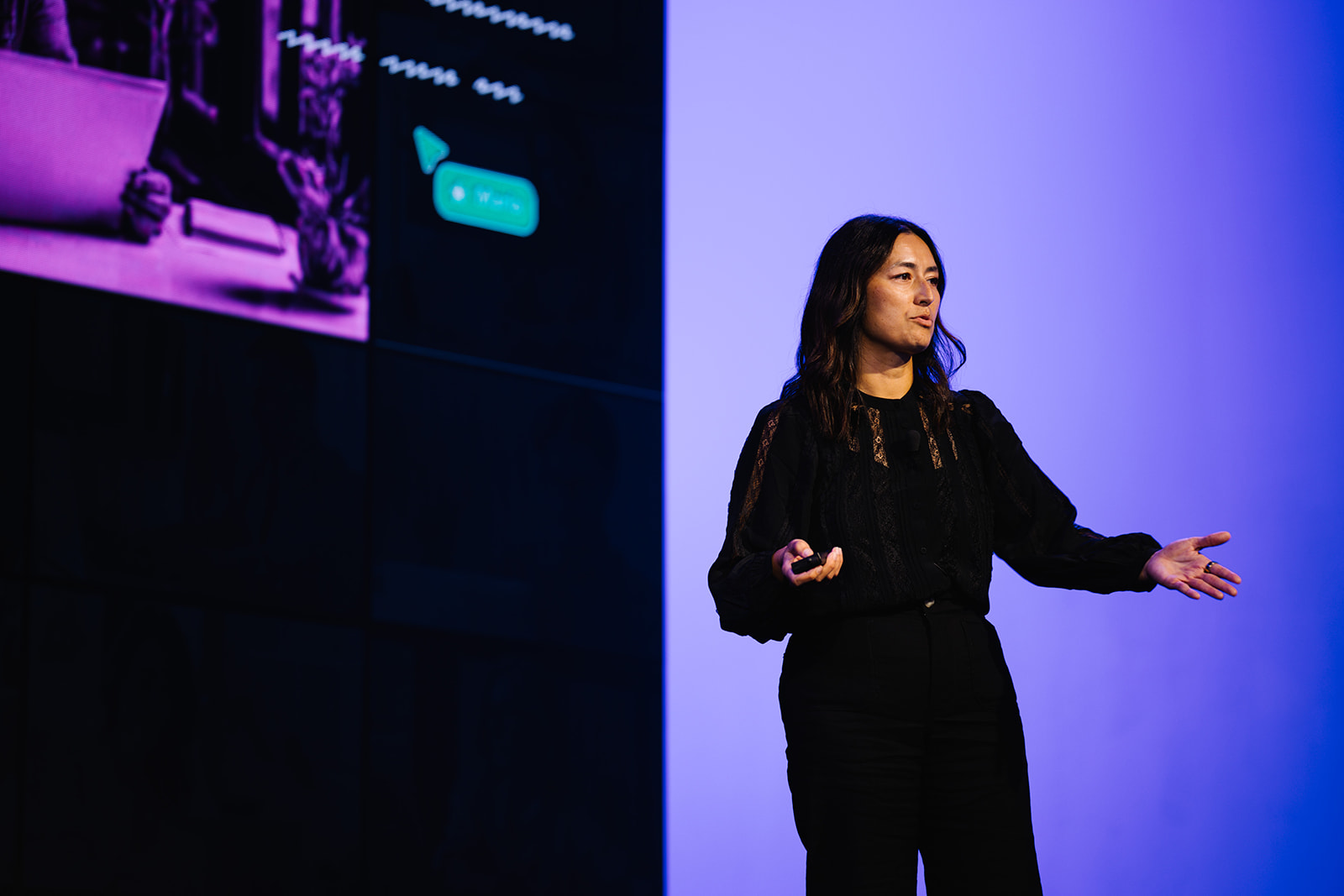Your project’s deadline is fast approaching. You’ve already held more than enough stakeholder meetings. Everyone knows their task at hand — yet questions seem to keep coming up.
This is normal, but that doesn’t make it any less stressful. Calling another meeting to discuss problems may only slow things down.
So what can you do when you just need to get the work done?
It’s time to consider the working session. More focused than a meeting and more social than a sprint, it can be the perfect way to tackle that project in time.
What is a working session?
A working session is a concentrated type of meeting in which a small group or team gathers to accomplish a specific goal or objective. They rarely last longer than 90 minutes and will typically involve only a limited number of people, most likely between two and four, all of whom have a shared interest in the task at hand. Each person will usually work independently on their job, while also remaining available to other team members to collaborate or answer questions where needed.
Working session facts:
- 90 minutes or less
- Small group of primary, involved stakeholders
- Make room for independent work in group setting
Regardless of the approach, the focus of a working session should be on producing tangible results, as opposed to simply holding a discussion, by the time it is finished.
Are working sessions just meetings?
Working sessions are similar to meetings in that both involve a limited number of people collaborating on a topic or project.
But the similarities tend to end there.
Rather than emphasizing discussion or conversation, the purpose of working sessions is to (as the name suggests) get work done. This could involve designing a prototype, coming to a decision, or otherwise leaving the session with something concrete to show for it.
Because of this, working sessions are often less formal than meetings, with a more collaborative and participatory structure. Likewise, they tend to be shorter and less open-ended in order to make it easier for participants to focus on the task at hand.
Most notably, there is often an added sense of accountability among participants within working sessions. Because everyone is working together, with clear tasks to accomplish inside of a limited timeframe, everyone shares responsibility for making progress.
Benefits of working sessions
The biggest benefit of working sessions, of course, is that they are a great way to boost productivity, check off that to-do list, and finally move your project forward. But they also come with a number of other benefits:
- Increased collaboration: Even if everyone is working on their own tasks, simply by having them all in the same room (or Zoom session), you are providing them with an opportunity to share ideas, break down silos, and work more closely together.
- Improved buy-in: With short timeframes and a focus on a specific task, working sessions are biased toward action. By collaborating together toward a common goal, everyone involved is more likely to find common ground.
- Better team cohesion: The ability to quickly communicate with each other, solve problems, and check off goals can all help to motivate employees, improve morale, and bring everyone closer together.
- Improved creativity: Working sessions often involve a number of strategies — such as brainstorming, mind mapping, and other creative techniques — in order to generate innovative and actionable ideas that will solve the problem at hand.
- Shared understanding: By focusing on a specific goal and building consensus, working sessions ensure everyone has a clear idea of what needs to be done. There is no room for confusion or ambiguity when the goal is tangible progress.
How to hold effective working sessions
Getting all your stakeholders together can often be enough of a challenge. That’s why it’s worth it to make sure the next hour or so is as productive as possible. Here are some tips to ensure your next working session gets the job done.
Ensure you know the problem you're trying to solve
Go into each working session with a clear problem to solve or job to get done. This is typically not the time to hold an open-ended discovery conversation. Of course, there are exceptions — perhaps your team has reached an impasse with an important decision and needs to talk through the problem and all its possible solutions — but this is generally not the case. Instead, the most successful sessions are focused on a specific, pre-defined issue.
Hopefully, by making working sessions an infrequent and exceptional part of your workstream, the problem you are trying to solve will be obvious. If not, there are a number of tactics you can use to narrow down your challenge and come out with a clear task.
Need some ways to jumpstart your conversation, identify your problem, and come up with clear action items to solve? We’ve got you covered.
Consider using the following templates to start the work of getting it done:
- Round Robin: Great for brainstorming and ideation, use this template to generate and iterate on ideas across your whole team.
- Ideation Sprint: Another great template for virtual brainstorming and ideation, this one combines four different methods to help you come up with ideas about a given problem.
- North Star: This template is designed to align your team on a project's goals, roles, target audience, and other essential details, helping everyone work more effectively and efficiently.
Clarify action items and the stakeholders responsible during the working session
Similar to any meeting, it’s a good idea to go into a working session with a clear agenda. However, this should not only state what needs to get done, but also who will be in charge of every action item.
Start by writing down the problem and listing out every task that needs to get done. Try to be as specific as possible. For instance, instead of saying that a sales deck needs to be created, list out the actual goals or topics the sales deck should address. This way, you’ll be better able to track the progress of each item as the working session gets underway.
Done right, everyone will know exactly what they need to get done from the moment they walk in (or turn their camera on).
Keep the invite list short
In order to keep the working session focused and productive, try to only invite people who are critical to the task at hand. Remember that the purpose here isn’t to have a discussion or brainstorm through different ideas. The goal is to solve a problem or get the job done. If there is someone on your list who isn’t essential to a task, then they probably shouldn’t be involved.
If you write out your ideal participants and find the list going over six or seven people, then this may mean the goals of your working session are too broad. Ask yourself how you can narrow the problem at hand so that it is more focused. And if needed, don’t be afraid to reconvene your stakeholders and ask them what can be cut.
Related: 10 tips for managing stakeholder expectations
Ensuring that only the most essential items and people are part of your session is critical to increasing its productivity and maintaining focus.
Create a cue or signal that any participant can use to indicate that the group has gone off task
By being proactive and thinking ahead to ways your working session could possibly go off the rails, you’ll be more likely to accomplish the tasks at hand. For instance, it’s natural for some people to take over a conversation or get others off task, especially in more collaborative and social environments.
With your fellow collaborators, establish a cue or signal they can use to indicate when they think the session is not on task. This could be as simple as a codeword that anyone can say without judgment. Or you could run a quick check-in to actively gauge how people are feeling.
In any case, giving participants themselves a stake in controlling the session not only reduces the burden for you — it can also help improve overall engagement.
Use working sessions selectively
Working sessions can be so wonderful — and productive — because they require focus, as well as a good amount of determination and grit. But this same quality can also make them intense. In small doses, this is a good thing.
Note: Keep working sessions infrequent. If you’re holding regular working sessions, this might cause burnout and indicate a poor culture of collaboration.
Turning working sessions into a predictable part of work can also make them seem like just another meeting. Knowing there will always be another one around the corner may take away some of the motivation to get work done. If that happens, you risk losing the spontaneous collaborative nature that makes them so great.
So how often should you hold them? This will depend on many factors — the makeup of your team, the number of projects you have, even your culture — but, in general, you should try not to hold them more than once a month, or even once a quarter for small teams. Make them feel like exceptional events, a chance for everyone to get together and collaborate in a special way. That way, you can maintain their magic.
Conduct effective working sessions to level-up your collaboration
Working sessions can be an efficient and productive way to check off a to-do list and take a project past its finish line. They can also be a novel break from your everyday meeting.
However, like meetings, some work needs to be done both before and during a session to make sure they are as effective as possible. But by taking the time to define the problem and outline your objectives (maybe with the help of a few useful templates), as well as putting in place strategies for keeping everyone on task, you can ensure everyone leaves your next working session with something to show.
With a shared digital collaboration space like Mural, you can quickly capture ideas with sticky notes, organize them however you like in an infinite canvas, and add tags for filtering and next steps. When the working session is over, your team (and organization) has an interactive and valuable record of the work.
Traditional meetings are broken, but there’s a way to fix them. Learn how you can leverage async collaboration to change your team’s approach to meetings.













